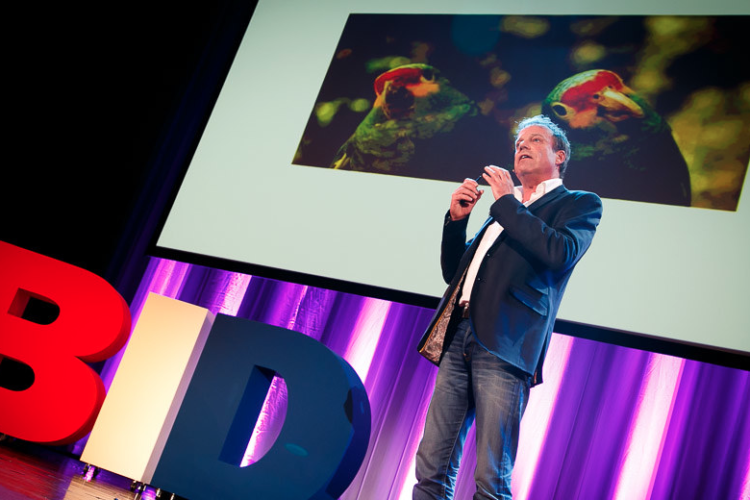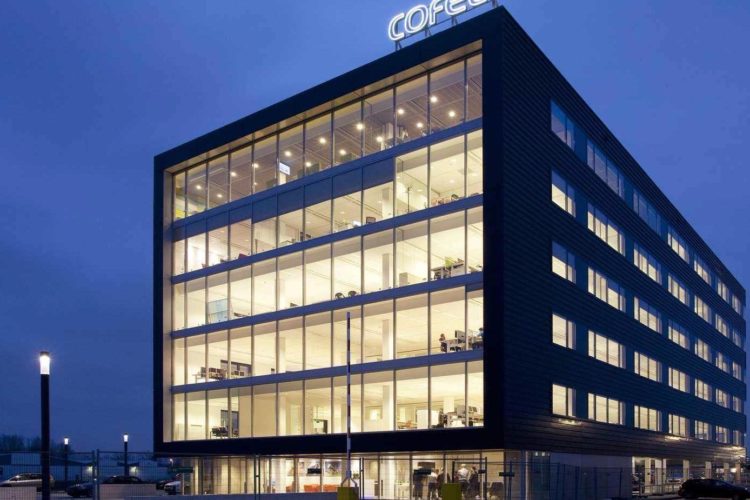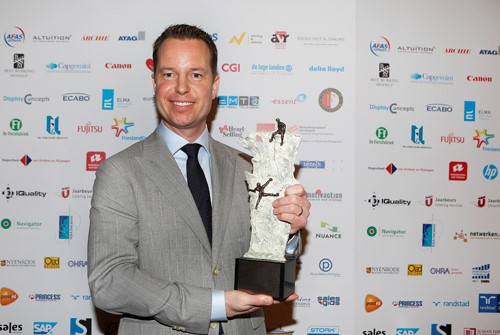In navolging op het succes van het managementboek ‘Bitsing, Garanties voor Groei’ volgt nu de internationale versie ‘The Seven Laws of Guaranteed Growth’. Vanaf oktober wereldwijd in de boekhandels verkrijgbaar.
Auteur: Frans de Groot
De Bitsing agenda
De grondlegger van de Bitsing-methode, Frans de Groot is begenadigd spreker. Veelvuldig wordt hij uitgenodigd te spreken op congressen, bij organisaties, bij evenementen en business clubs. Maar ook op universiteiten en hoge scholen.
Als je er een keer bij wilt zijn? Zie hier de aankomende agenda.
Maandag 20 februari, 10.00 -17.00 uur
Opleiding Bitsing in Amsterdam
Dinsdag 7 maart 17.00 – 18.00 uur
Directeuren Vergadering
Collegiale In- en Uitleen Oost
Hotel Van de Valk De Cantharel te Apeldoorn
Donderdag 9 maart 16.00 – 17.00 uur
Bitsing webinar bij Yellow Walnut Amsterdam
Vrijdag 24 maart 12.00 – 13.00 uur
Bitsing inspiratie sessie
Netwerk Beurs Steenwijkerland
Nieuwe gecertificeerde Bitsing professionals
Nieuwe gecertificeerde Bitsing professionals
Na een intensieve opleiding en praktijktraining heeft The Bitsing Company (het Bitsing adviesbedrijf van de grondlegger van de Bitsing-methode, Frans de Groot) met trots weer twee organisaties het certificaat ‘professioneel Bitsing adviseur en coach’ gegeven.
 Bert van den Hurk met zijn consultancybureau ‘Blauwe banaan’.
Bert van den Hurk met zijn consultancybureau ‘Blauwe banaan’.
Linkedin: https://www.linkedin.com/in/bert-van-den-hurk-a7811692/
 Alexander Faber van Faab Consultancy
Alexander Faber van Faab Consultancy
Linkedin: https://www.linkedin.com/in/alexanderfaber/
Bert en Alexander zijn persoonlijk opgeleid en getraind door Frans de Groot. Een certificering betekent dat de gecertificeerde volwaardige Bitsing adviezen kan geven, volgens de richtlijnen die The Bitsing Company daaraan stelt, en in staat is om bedrijven, organisaties en andere instellingen probleemloos te helpen bij het implementeren van alle facetten van de Bitsing-methode, met als onderliggende taak opdrachtgevers bij hun ambitieuze groei-doelen te brengen.
Kostenloze leerzame Bitsing inspiratiesessie
Ter kennismaking geven Bert en Alexander kostenloos een Bitsing Inspiratiesessie van een uur. Schroom niet om een van hen een email te sturen. Ze staan in de startblokken om bij je langs te komen en de ene na de andere verrassende eye-opener met je te delen.
Voldoet jouw organisatie aan de 7 wetten voor gegarandeerde groei?
In een periode van meer dan twintig jaar heb ik honderden bedrijven, organisaties, instellingen en personen, die allemaal mijn BITSING-methode hebben ingezet, gevolgd bij het behalen van hun doelen.
Door te meten, te leren, te optimaliseren en door de vele praktijkcases en de samenwerking met hogescholen en universiteiten (Bitsing is onderdeel van het door de Europese Commissie gefinancierde European Master Program, waarin vier gerenommeerde Europese universiteiten deelnemen) kon ik alle successen en mislukkingen in kaart brengen en zien wat werkte en vooral wat niet werkte.
En wat bleek?
Gedurende het bestuderen van de BITSING-activiteiten kwam er telkens een aantal naar voren die probleemloos hun doelstellingen haalden en waarvan er enkele zelfs explosief groeiden, soms met het precieze magische percentage van 300. Ze hadden een zevental dingen gemeen.
Het geheim van succes
Met deze 7 revolutionaire inzichten ontdekte ik het geheim van onherroepelijk succes. Dat er zeven wetten ten grondslag liggen aan het probleemloos en versneld bereiken van doelen. Ik heb die wetten vertaald naar een zevental tijdloze factoren en heb ze de ‘zeven Bitsing-principes’ genoemd.
Volg ze, leg het denken en doen van je organisatie en vooral van je medewerkers langs de zeven wetten en succes bij het behalen van je doelen is verzekerd. In hoeverre voldoe jij aan de zeven wetten?
Ik heb hier een de checklist voor je!
Wet 1. Neem je altijd een continuïteits-doel als richtpunt?
Continuïteit wil hier zeggen dat je organisatie blijft voortbestaan in de huidige vorm (dus niet krimpt) en daarop voortbouwt. De meeste organisaties streven doelen na die niet in staat zijn de continuïteit te waarborgen. Dat zijn ‘foute doelen’. Ik noem ze gekscherend ook wel eens ‘doel-shit’. Vaak zijn het strategieën of taken, maar zeker geen doelen. Denk aan kostenbesparingen, het schrappen van banen, introductie van nieuwe producten en diensten, nieuwe markten bewerken, bedrijfsovernames, stimuleren van verkopen, uitbreiding dienstverlening, marketing gerelateerde doelen. Om er enkele van de vele tientallen foute doelen te noemen. Geen van deze ‘foute doelen’ geven de garantie dat je in luxe kunt voortbestaan of daarmee groeit.
De organisaties waarmee ik met de Bitsing-methode aan de slag ben gegaan en die daarmee exponentieel groeiden – sommige met 300% – namen unaniem een financieel, bijna altijd omzetdoel met groei als startpunt.
Wat is jouw ambitieuze omzetdoel met groei voor de komende maanden en 2016? Is dit omzetdoel als richtpunt genomen bij alles wat iedereen vandaag in je organisatie denkt en doet? Ook bij wat je nu doet?
Wet 2. Wees zeker dat je je doel altijd bereikt door te focussen op harde financiële feiten.
De meeste afwegingen die binnen een organisatie worden gemaakt zijn gebaseerd op aannames, op het denken van de betrokken mens. Niet op feiten. We doen maar wat, in de hoop dat iets werkt. Meestal werkt het niet. Het zijn echter de feiten die waar zijn en daarmee in staat zijn je de juiste keuzes te laten maken. Baseer je keuzes en de focus van je organisatie om te beginnen op feiten en gooi alles wat op aannames is gestoeld in de prullenbak.
Vervolg met de vraag “op wat voor feiten dien ik mijn keuzes te baseren?”. Het antwoord daarop is even logisch als simpel, namelijk ‘financiële’ feiten. Als je een financieel doel (omzet en groei) hebt te behalen dan dienen de keuzes en focus van je organisatie gebaseerd te zijn op financiële feiten.
In hoeverre is het financieel feitelijk onderbouwd – en weet je daarmee zeker – dat je je financiële doel, bijvoorbeeld groei-omzet haalt als je winkels gaat re-stylen? Of als je je sales-mensen aanzet tot het maken van afspraken? Of als je de verkopen gaat stimuleren met een kostbare campagne? Of als je die innovatie keihard gaat introduceren? Kijk naar waar de focus van je organisatie vandaag op ligt en controleer of deze keuze op financiële feiten is gebaseerd en daarmee feitelijk leidt tot groei-omzet…is de huidige focus feit of hoop?
Wet 3. Is de bewerking van je markten onverslaanbaar?
Als je onverslaanbaar bent dan geef je anderen het nakijken. In hoeverre is de wijze waarop je de markten en doelgroepen benadert kopieerbaar? Als je namelijk kopieerbaar bent, dan ben je nogal verslaanbaar.
Zorg dat je ‘niet kopieerbaar’ (een begrip uit de Bitsing-methode) met je markten en doelgroepen communiceert. Ik heb hier wat voorbeelden van organisaties die zich wel heel erg kopieerbaar positioneren: ‘ABN AMRO. De bank anno nu’…laten we het hopen. ‘Blokker. Fijn dat we er zijn’…communiceren we hier een probleem? ‘Aegon. Eerlijk over later’…zei de grootste woekeraar van Nederland. ‘KLM. Een reis vol inspiratie’…ok dan. ‘Albert Heijn. 1.000 artikelen in prijs verlaagd’, ‘Dirk is de goedkoopste altijd’, C1000. De goedkoopste van Nederland’, ‘Jumbo. Laagste prijsgarantie’, ‘Lidl. De hoogste kwaliteit voor de laagste prijs’…say no more.
Alleen als je niet-kopieerbaar bent win je de strijd en kun je het continuïteits-doel van je organisatie behalen.
Wet 4. Haal je alles uit iedere persoon in je doelgroepen?
Je hebt mensen nodig bij wie je jouw financiële continuïteits-doel, je groei-omzet gaat halen. Die mensen komen uit een doelgroep (zie wet 2: is die doelgroep financieel feitelijk bij jou de juiste?) en die worden en blijven niet zomaar klant.
Dat heb je vast zelf al ervaren toen je een fraai aanbod deed en er slechts een enkeling (en niet allen) op in wilde gaan. Dat komt omdat niemand hetzelfde is, denkt en doet, maar je wel iedereen benaderd hebt met 1-en dezelfde boodschap. Omdat niemand hetzelfde is, is het evident dat je een mix van verschillende acties op je doelgroepen moet loslaten om iedereen te bereiken en te raken.
Ben je er 100% zeker van dat de mix van activiteiten van jouw organisatie (als die mix er is) echt iedereen, ja iedereen raakt? Een tipje van de Bitsing-sluier: je organisatie moet op zes activiteiten focussen om alles uit iedere persoon in je markten en doelgroepen te halen.
Wet 5. Realiseer je louter effectieve activiteitenprogramma’s, extern en intern?
Je kunt nog zulke goede plannen hebben, met een slechte uitvoering lopen ze allemaal uit op een debacle. Ik heb er zelf vele jaren over moeten doen voordat ik doorhad wat een goede uitvoering van een plan eigenlijk inhoudt. Het gaat te ver om hier over uit te wijden. We zullen elkaar persoonlijk moeten spreken om je dat uit te leggen. Wel heb je onder wet 4 gelezen dat je altijd een mix van zes programma’s met je organisatie dient uit te werken. Geen enkel van deze programma’s heeft hetzelfde effect, dus ook niet dezelfde inhoud en boodschap.
Alleen als je het juiste programma op iemand loslaat, kan het effectief zijn werk doen en bereik je je continuïteits-doel. Als jouw programma’s een beter resultaat oplevert dan dat je ervan had verwacht zijn ze effectief in orde, en als ze dan gezamenlijk jouw continuïteits-doel doen realiseren zijn ze perfect. Is dat momenteel ook zo?
Wet 6. Voorspel je de resultaten van activiteiten alvorens ze in gang te zetten en uit te rollen?
Op de website van de uitgever van mijn boek ‘Bitsing. Garanties voor Groei’
(Bertram+De Leeuw) staat een hele fraaie quote: ‘Het is een geweldig gevoel als je van tevoren weet dat je altijd je doelstellingen zult gaan halen’.
Dat is wat je met de Bitsing-methode doet, het vooraf voorspellen van de resultaten van al de keuzes en activiteiten van je organisatie en medewerkers in het bijzonder. Daardoor ben je er altijd zeker van dat je succesvol je doelen bereikt.
Als je van te voren inzicht in de resultaten hebt, stelt je dat in staat om rustig te slapen en om bij te sturen.
Wat zo mooi is aan de Bitsing-methode, is dat je ook kunt voorspellen dat iets niet het beoogde resultaat gaat opleveren, zoals de methode het Fyra-debacle heeft voorspeld. (zie ook het blog ‘Hoe de Bitsing-methode het Fyra-debacle voorspelde‘)
Ben jij in staat om de resultaten van al de keuzes en activiteiten van je organisatie te voorspellen?
Wet 7. Ben je verzekerd van financieel rendement?
Heb je wel eens betaald voor iets waarvan je niet wist of je het ook zou krijgen? Ik acht de kans erg klein. Het oogt nogal vreemd dat je bij de bakker een brood bestelt, er keurig voor betaalt en vervolgens zonder brood de deur uitloopt. En toch gebeurt het dagelijks, in vrijwel elke organisatie. Er wordt geïnvesteerd zonder de zekerheid dat je het dubbel en dwars terug verdient.
In hoeverre ben jij in staat het financieel rendement van je activiteiten vooraf te voorspellen en kun je als gevolg minder geld aan die activiteiten besteden dan dat ze zullen opbrengen? Zelfs € 10 is al teveel als je het risico loopt er niets voor terug te krijgen.
De Bitsing-methode
Alles over de Bitsing-methode en zijn modellen vind je onder meer in de nummer 1 managementboek bestseller ‘Bitsing. Garanties voor Groei’
Maar schroom niet om mij te contacten als je de ‘ins & outs’ van de Bitsing-methode en zijn zeven wetten en modellen een keer wilt beleven. Je kunt het ervaren tijdens een van mijn Bitsing-lezingen. Het is kosteloos.
Immers, iedereen verdient het om zijn doelen te bereiken en gelukkig te zijn (en vooral lekker zorgeloos te slapen)
Bitsing bedrijven
De stand van zaken
Iedere week laat een random selectie van tien bedrijven, organisaties en instellingen in binnen en buitenland zien waar ze staan met hun eigen Bitsing implementatie.
Nummer 19 in de Bitsing Top 100
VGZ
Fase 4. Doel bereiken: met de uitvoering van het Garantieplan en de uitrol van externe en interne Bitsing-programma’s.

Nummer 10 in Bitsing Top 100
Kröller Boom
Fase 10. Continueert voor het derde opeenvolgende jaar: uitvoering van het Garantieplan 2017 met de uitrol van externe en interne Bitsing-programma’s.

Nummer 75 in de Bitsing Top 100
EPI Group
Fase 2. Validatie: de afronding van het Bitsing Garantieplan.

Nog geen plek in de Bitsing Top 100
Beercoo Schoonmaakgroep
Fase 1. Analyse: Bitsing Basisplan afgerond.

Nummer 33 in de Bitsing Top 100
Kennis Transport
Fase 3. Optimalisatie: realisatie van Bitsing-programma’s (Kennis Transport staat vlak voor de uitrol).

Nummer 21 in de Bitsing Top 100
De Klerk & Vis Gerechtsdeurwaardersgroep
Fase 3. Optimalisatie: realisatie van Bitsing-programma’s (Kennis Transport staat vlak voor de uitrol).

Nummer 1 in de Bitsing Top 100
Saint Gobain Weber Beamix
Fase 10. Continueert voor het derde opeenvolgende jaar: uitvoering van het Garantieplan 2017 met de uitrol van externe en interne Bitsing-programma’s.

Nummer 92 in de Bitsing Top 100
Prescan
Fase 2. Validatie: de afronding van het Bitsing Garantieplan.

Nummer 50 in de Bitsing Top 100
Gevierdales onderdeel van de Rensa groep
Fase 3. Optimalisatie: realisatie van Bitsing-programma’s (Kennis Transport staat vlak voor de uitrol).

Nummer 14 in de Bitsing Top 100
Mkbasics.nl
Fase 4. Doel bereiken: met de uitvoering van het Garantieplan en de uitrol van externe en interne Bitsing-programma’s.
![]()
Cofely en zijn Bitsing
Cofely – Bitsing-gedreven innovatie
- Het leggen van focus ook in start-up situaties
- Het eigen maken van de methodologie binnen afdelingen
Interview met Bas Ambachtsheer
Algemeen Directeur van Cofely West Nederland BV en Cofely Energy Solutions BV
Bas en ik kennen elkaar al geruime tijd. We hebben elkaar ontmoet toen hij werkzaam was bij Fokker Services, waar ik in hoofdstuk 3 het voorbeeld van ‘niet-kopieerbaarheid’ aan heb gewijd. Bas is enkele jaren gelden gevraagd om algemeen directeur bij Cofely te worden, en de Bitsing-methode is met hem mee verhuisd.
Cofely is een technisch dienstverlener en maakt deel uit van GDF SUEZ Energy Services, dat met 220.000 werknemers en meer dan € 90 miljard omzet het grootste concern ter wereld is op het gebied van installaties en technische dienstverlening. De dienstverlening van Cofely strekt van de ontwikkeling, het ontwerp, de realisatie en het onderhoud van technische installaties tot en met de oplossingen voor – duurzaam – energiebeheer. Waar je ook bent, je komt in zo goed als elk bedrijf de mensen van Cofely tegen. Let maar eens op de kleding. Het is een bijzonder bedrijf.
Zo realiseerde Cofely het energiedistributienetwerk van het London 2012 Olympic Parc. Met een netwerk van 16 kilometer en twee ultramoderne, duurzame energiecentrales – 50% minder CO2 uitstoot – is dit een van de grootste energieprojecten ooit in het Verenigd Koninkrijk.
We komen Cofely ook dichter bij huis tegen. Zo realiseert het samen met de gemeente Amsterdam op het Oosterdokeiland en het Wester IJdok ‘Het groenste eiland van Amsterdam’. Door middel van een Cofely Warmte-Koude Opslagsysteem worden alle aangesloten gebouwen op duurzame manier voorzien van energie, waardoor 65% minder fossiele brandstof nodig is.
In Nederland werken er bij Cofely z’n 6.000 medewerkers en realiseert het een omzet van ruim € 1 miljard.
Cofely en de Bitsing-methode
Ik heb je al gezegd dat Bas voor het eerst met Bitsing in aanraking is gekomen tijdens zijn eerdere werkzaamheden bij Fokker Services. Hij was daar betrokken bij de ontwikkeling van een nieuwe business line, die vanaf de prille start gestructureerd is om zo goed mogelijk aansluiting te bieden bij de met behulp van Bitsing ontwikkelde ‘go-to-market’ strategie.
Sinds die tijd roemt hij het duidelijke onderscheidende vermogen dat Bitsing in de vorm van het ‘gouden ei’ oplevert en ‘het vermogen van Bitsing om richting te geven aan de commerciële strategie: Bitsing speelde een cruciale centrale rol gedurende het gehele proces van a) het bepalen van product en markt, b) de operationele procesinrichting en c) de groeiontwikkeling van deze business line’, die onder de verantwoordelijkheid van Bas viel.
Ook in zijn huidige functie binnen Cofely speelt Bitsing van begin af aan een prominente rol.
‘Vanuit onze overall strategie zagen wij het belang om nieuwe services aan ons portfolio toe te voegen, uiteraard gekoppeld aan ambitieuze omzetdoelstellingen. In 2010 zijn wij daarom o.a. een nieuw bedrijfsonderdeel gestart gericht op Warmte-Koude Opslag (WKO). Uiteraard horen bij dergelijke initiatieven de nodige investeringen. CFO’s vinden Bitsing om die reden heerlijk’, aldus Bas, ‘vanwege de scherpe focus, heldere structuur, en duidelijke ROI voorspelling. De lijn van autonome groei die we in ons meerjaren business plan hebben gehanteerd is dan ook volledig op de Bitsing-methodologie gebaseerd.
Bitsing heeft ons daarbij van te voren in staat gesteld de ‘papieren blauwdruk’ van het op te richten bedrijfsonderdeel gericht te toetsen op de scherpte van onderliggende strategische focus. Een leuk en tegelijk intensief traject van een paar weken, vol openbaringen. Vooral het feit dat je het met je team doet maakt het ook gewoon leuk. Als je binnen een dag à twee dagen iets van nul naar iets kunt brengen, dan is Bitsing een methodiek die je brengt van 0 naar heel veel, het gaat snel.
Je merkt iedere keer opnieuw dat je met behulp van Bitsing een transitie maakt van onderbewust, naar zeer bewust. Bitsing geeft je daarbij zoveel inzicht in waar je wel en niet op moet gaan focussen. Oftewel, het zorgt ervoor dat je gaat bouwen aan de goede dingen. Zo heeft het proces o.a. tot een totaal andere focus geleid over de vraag wie nu onze klant is. Vanzelfsprekend hebben we hierop direct aanpassingen in de structuur van het geplande bedrijfsonderdeel aangebracht.
Na de eerste aanloopfase in januari 2010 is het bedrijfsonderdeel Warmte-Koude Opslag (WKO) in 2011 voor het eerst winstgevend. Door consequent vast te houden aan de Bitsing-strategie is de omzet inmiddels van € 8 mln in 2011, naar € 15 mln in 2012 gegroeid, een bijna verdubbeling van onze omzet. Dit jaar gaan we een exponentiële winst maken en dat heeft toch te maken met een aantal dingen waar we op hebben gefocust middels het Bitsing-proces. We beginnen nu echt te draaien als een tierelier.
Bitsing is altijd een onderdeel van wat ik heb gedaan, ik gebruik het om te kijken hoe ik zaken op orde krijg. Bitsing is dan ook in iedere bedrijfsfase zinvol. Van start-up in de business development fase tot steady-state waar je een boost wil maken, Bitsing biedt altijd goede richting, relevante feedback en stuurmechanismen. Zeker in een start-up situatie biedt het zoveel meer richting dan de gebruikelijke analyse van marktrapporten e.d..
De methodologie is pragmatisch, to the point, een model dat een kop en een staart heeft en maakt inmiddels daarom echt onderdeel uit van ons DNA. Dat niet-kopieerbare, dat is gewoon een geniale vondst, maakt het verhaal helder naar je klant, brengt je naar grote hoogte!
Als ik mensen uitleg geef over salesprocessen dan gebruik ik altijd de Bitsing-methodiek.
Ons hele salesteam ademt dan ook Bitsing, de methodologie is helder en is in de basis goed uit te leggen en daardoor binnen korte tijd eigen te maken. Daarbij is er wel degelijk sprake van een leercurve, je gaat steeds beter de verbanden zien en daardoor telkens weer je eigen effectiviteit verbeteren. Bitsing is daarmee een continu verbeterproces, het gaat exact in op de vraag waarom je nu wel of niet verkoopt, eigenlijk een soort ‘heilige check’ wanneer er iets fout gaat en het waarom erachter.
Dit geeft mijn salesteam ook inspiratie en enthousiasme. Ze snappen waarmee ze bezig zijn en vinden het leuk. Bitsing geeft ze structuur, een quasi van vakmanschap in hun business – zoals dat normaal alleen bestaat in meer operationele functies – en beloning in de vorm van succesvol zijn. Eigenlijk zeggen ze: hé, hier wordt dus geleerd hoe je sales moet doen en omzet moet maken.
De mensen die succesvol zijn, zijn de mensen die Bitsing begrijpen. Iedereen weet wat ze moeten doen als het gaat om hit-rates, klantbezoek, conversie, noem maar op. Zo krijgt de T van traffic pas echt waarde als de B en de I ook waarde hebben. Die Bitsing-methode zit er bij mij helemaal in bij de aanpak van commercie, ik ben mijn mensen ook aan het leren in het begin alleen op die B en I te focussen. Ze mogen gewoon niet verkopen! En dat werkt dus!
Iedereen zei in het begin tegen mij: ‘Ja een bezoek dat krijg ik wel.’ Maar ja die telt dan eigenlijk niet, de T is in dat geval namelijk niet een traffic richting sales maar juist één om de B en de I invulling te geven. Mensen moesten er aan wennen, wegwezen voordat je over verkoop wilt gaan praten. Maar het werkt als een tierelier. Het betekent gewoon dat aan het einde van het gesprek de prospect op eigen initiatief zegt: ‘Hé, maar dat betekent dat ik geïnteresseerd ben in dat, dat en dat.’
Dit is dan ook meteen één van de grootste valkuilen, de B en de I worden toch vaak hoger gerankt dan ze in werkelijkheid zijn omdat men denkt: ‘Ze kennen ons wel.’ Maar… hoe goed kennen ze je nu echt? De ervaring leert dat je vaak te snel oordeelt dat mensen je wel kennen, mensen kennen je gewoon niet! Als je vraagt ‘weet je wat wij doen’ is het antwoord toch vaak ‘nee’.
Dat betekent dat ik aanvankelijk de hele sales force toch moet terug halen; jongens eerst tien minuten heel rustig gaan vertellen over Cofely. Het leuke aan Bitsing is daarbij dat als je het met je team doet, er ook een heel leuk plan ontstaat. Dit hele proces is ook iets dat ons heel veel gebracht heeft. Iedereen spreekt dezelfde taal en begint hetzelfde te denken.
Daarbij helpt het ook echt te sturen op effectiviteit. Zodra mensen steeds langer en meer uren maken op een klant maar er gebeurt niets, dan gaat er dus iets fout in bijvoorbeeld de B of de I… Het helpt om te checken waar we staan, het beheersen van het proces. Daarom zorg ik in mijn teams ook voor complementariteit, mensen die goed zijn in de B-tjes en I-tjes maar ook mensen die goed zijn in het closen van de deal. Ik stimuleer ze elkaars kracht gebruiken.’
Tip van Bas aan jou: ‘Bitsing is een investering, deze investering moet zich natuurlijk terugverdienen. Daar moet je wijs in durven te zijn! Ook al moet je verantwoording afleggen, je kan Bitsing nooit te vroeg doen. Je kan beter na verloop van tijd een tweede keer moeten ‘bitsen’ dan één keer te weinig!’
Bitsing in het nieuws
Release internationale boek over Bitsing
http://www.bispublishers.com/seven-laws-of-guaranteed-growth.html
Management Scope: de Bitsing-methode – maximaliseren tegen minimale kosten
http://managementscope.nl/opinie/rene-jongen-bitsing-methode-maximaliseren-minimale-kosten
Speakers Academy Magazine: Gegarandeerd doelen bereiken met een vooraf voorspeld resultaat en rendement
https://www.speakersacademy.com/files/frans_de_groot-_academy_magazine_2015-2016_0393ff38.pdf
Bereik je zakelijke doelen. De Bitsing-methode werkt!
https://debrugkrant.nl/bereik-je-zakelijke-doelen-bitsing-methode-werkt/
Klantgericht ondernemen in de 21e eeuw
http://klantgerichtondernemen.blogspot.nl/2015/05/marketingfocus-door-bitsing.html
Bitsing: de betekenis van focus
http://www.demetaal.nl/2013/11/bitsing-de-betekenis-van-focus/
Bedrijvennetwerk Top of Holland: Bitsing in het kort
http://www.bedrijfsnetwerk-topofholland.nl/_files/Bitsing_in_het_kort.pdf
Garantie voor Groei: het boek
http://www.bertramendeleeuw.nl/boek/bitsing
MKB Radio
http://mkbradio.nl/rendement-voorspellen-met-bitsing/
We gaan het hebben over prioriteiten
http://ernohannink.nl/prioriteitenbitsing-5-van-5/
Made in Oost-Vlaanderen
http://www.madeinoostvlaanderen.be/nieuws/is-bitsing-de-methode-die-leidt-naar-gegarandeerde-omzetstijging/
Meer online rendement
http://louisjansen.nl/blog/ecommerce/meer-online-rendement-met-minder-budget-dankzij-bits
Starten met Bitsing
Bitsing is er voor iedereen!
Althans voor iedereen die probleemloos zijn of haar doelen wil bereiken, en dat met een vooraf voorspelt resultaat. Want, dat is wat Bitsing is en wat het voor je doet.
De grootste multinational tot en met de kleinste onderneming om de hoek, ze zijn met Bitsing bezig. In de meest uiteenlopende branches en onder de meest uitdagende marktomstandigheden.
Omdat Bitsing er voor iedereen is, zijn er ook net zoveel manieren om geholpen te worden bij de implementatie ervan.
Van simpelweg nummer 1 bestseller-boeken, korte seminars en workshops tot en met intensieve persoonlijke coaching, training en opleiding. Net naar wat voor jou het beste is om je doelen te behalen.
Alle mogelijkheden om geholpen te worden bij de implementatie van Bitsing zijn verenigd in The Bitsing Company. Het bedrijf dat de grondlegger van de Bitsing-methode, Frans de Groot, in 2003 heeft opgericht om de explosieve vraag naar hulp bij de implementatie op te vangen. Sindsdien heeft het wereldwijd honderden Bitsing professionals voortgebracht.
Ben je werkzaam bij een bedrijf, organisatie of andere instelling, studeer je, ben je CEO, CFO, COO, DGA, manager, uitvoerder, of starter, klik dan verder naar www.thebitsingcompany.nl om je verder te helpen, te inspireren en te coachen.
Bitsing en de Wetenschap
De wetenschappelijke onderbouwing van Bitsing met systeemdynamica
Een artikel door Dr. Andreas Größler, Prof. Etienne Rouwette, Prof.dr. Jac Vennix
We kwamen Frans de Groot voor het eerst tegen in het kader van het nieuwe European Master Programme in System Dynamics (EMSD). Het EMSD-programma is een tweejarig masterprogramma dat door vier Europese universiteiten wordt verzorgd, de universiteit van Bergen in Noorwegen, de universiteit van Palermo in Italië, de New University van Lissabon in Portugal, en tot slot de Radboud Universiteit van Nijmegen in Nederland, die als coördinator van het programma optreedt (www.europeansystemdynamics.eu).
De ontwikkeling ervan is gefinancierd door Europese Unie en op dit moment stelt de Europese Unie ook zogeheten Erasmus Mundus-beurzen ter beschikking, zodat er studenten uit de gehele wereld aan mee kunnen doen. Studenten die door ons geselecteerd worden, starten het programma in het eerste semester in Bergen, waar ze de grondbeginselen van systeemdynamicamodelbouw leren. Het tweede semester kunnen ze kiezen óf voor Palermo (toepassing systeemdynamica op vraagstukken van publiek en privaat management) óf voor Lissabon (sustainability-vraagstukken). Het derde semester komen ze allen naar Nijmegen, waar ze getraind worden in de toepassing van systeemdynamica in managementteams.
Bij de start van het programma verzorgde Frans een college in het genoemde programma, waar jaarlijks zo’n 25 studenten van over de hele wereld aan meedoen. Het was ons eerste EMSD-cohort en uiteraard waren we zeer nieuwsgierig en een beetje gespannen over hoe dat bij die groep studenten zou vallen.
Welnu, we hadden ons geen zorgen hoeven te maken. Frans is een begenadigd
verteller en de studenten hingen aan zijn lippen (en wij trouwens ook). Het college van Frans diende als opstap voor de EMSD-studenten, die vervolgens met behulp van systeemdynamica een poging deden het Bitsing-model na te bouwen en te kijken of systeemdynamica op de een of andere wijze iets kon toevoegen aan de Bitsing-methode en antwoord kon geven op de prangende vraag hoe het toch kan dat al die ‘Bitsende’ organisaties zo extreem groeien.
Op het eerste gezicht leek het tamelijk voor de hand liggend en niet zo ingewikkeld. Bitsing is immers te vertalen naar een keten, waarin de factoren die van invloed zijn op het behalen van doelen zich over de tijd en stapsgewijs ontwikkelen, als ware het een trap die iedereen doorloopt om bij het doel van een organisatie uit te komen. Systeemdynamica doet iets vergelijkbaars: het brengt de ‘bronketens’ van een organisatie in kaart (denk aan personeel, financiën, marketing, productie en zo meer) en de onderlinge samenhangen die tussen die bronketens bestaan. Die ‘samenhangen’ zorgen voor de dynamische ontwikkelingen in organisaties en hun omgeving.
Door de overeenkomsten kon het dus niet moeilijk zijn om het Bitsing-model om te zetten naar een dynamisch systeemdynamica-model. En op die manier zouden we Frans kunnen helpen om het antwoord op de inmiddels beider vraag te kunnen krijgen: “waarom werkt de Bitsing-methode zo goed en waarom is er geregeld sprake van een resultaat dat significant hoger dan de doelstelling ligt, zoals 300%?”.
Dat moesten wij als wetenschappers toch wel kunnen verklaren met onze modellen.
Maar dat bleek wat te voorbarig.
Omdat de Bitsing-methode voor iedereen nieuw was gingen de studenten in het eerste jaar de Bitsing-methode een-op-een vertalen in systeemdynamica. Het leverde voor iedereen het noodzakelijke inzicht in de Bitsing-methode op. In het tweede jaar hebben de studenten richting gegeven wat de toegevoegde waarde van systeemdynamica voor de Bitsing-methode zou kunnen zijn om daarmee de eerste delen van de antwoorden te vinden waar we naar op zoek zijn. In het jaar daarop is via het modelleren van casestudy’s de impliciete kennis die we over de werking van de Bitsing-methode hadden expliciet gemaakt. En dat was nodig omdat je anders niet in systeemdynamica kunt modelleren. Wij werden diverse verrast hoeveel inzichten we kregen uit de noeste arbeid van alle betrokkenen. En hoe helder en grijpbaar ze waren. Die inzichten konden direct gedeeld worden met organisaties die worstelden met het behalen van hun (groei)doelen. Inmiddels hebben alweer tientallen organisaties een veel beter inzicht gekregen in wat ten grondslag ligt aan het bereiken van hun doelen en hebben talrijke daardoor probleemloos hun doelstellingen bereikt.
We werken nu aan een algemeen ‘Bitsing-systeemdynamicamodel’, dat op allerhande organisaties kan worden toegepast. Om er zo voor te zorgen dat de bronnen en ketens waarmee een organisatie te maken heeft – zoals de management, marketing, sales en after sales-ketens – eenvoudig gevisualiseerd kunnen worden, wat geweldig helpt bij de communicatie over een doelvraag of een specifiek probleem.
Op termijn zal de dynamische analyse met systeemdynamica een aanvulling zijn op de rekenmodellen die Bitsing momenteel ondersteunen. De dynamische analyse kan vervolgens herhaald onder allerlei scenario’s, bijvoorbeeld een groeiende of juist krimpende markt, meer of minder concurrentie, of (het antwoord op onze vraag) wat ten grondslag ligt aan de explosieve groei. Naast het weergeven en testen van de ketens, zou dan uiteindelijk het hele verdienmodel van een bedrijf onder de loep genomen kunnen worden.
De ervaring met systeemdynamicamodellen, die gebruikt worden om strategische vraagstukken in een organisatie te analyseren en robuuste oplossingen te bedenken en te testen met behulp van het model, heeft namelijk geleerd dat je zo’n model niet vóór, maar mét de organisatie moet maken om draagvlak te creëren en om de implementatie van de gekozen strategie te garanderen. Dat betekent dus het faciliteren van managementteams om tot een gezamenlijk model te komen.
En uiteraard vereist het faciliteren van een groep mensen heel andere vaardigheden dan de louter analytische vaardigheden die nodig zijn om een systeemdynamicamodel te maken. En dat is ook wat dit EMSD-programma zo uniek maakt: de combinatie van analytische en sociale vaardigheden.
In de afgelopen jaar hebben we een aantal gefundeerde hypothesen ontwikkeld die een verdere verklaring zouden kunnen geven voor het succes van Bitsing. Deze zijn nu systematisch getoetst. Alhoewel het antwoord op de succesvraag in zicht is hebben we zelfs nog niet alle antwoorden die we graag zouden willen hebben, maar door systematisch te toetsen beginnen daar nu langzamerhand inzichten uit te komen, die we in het volgende jaar verder kunnen uitwerken en testen.
Het doel is om door dit onderzoek een koppeling tussen de Bitsing-methode
en systeemdynamica te maken die uiteindelijk de Bitsing-methode verder wetenschappelijk zal onderbouwen en daardoor nog effectiever zal maken. Hoe we daar exact moeten komen, weten we uiteraard ook nog niet precies, maar dat is niet zo vreemd, want was het niet Einstein die zei: ‘Als we wisten wat we deden, zou het toch geen onderzoek heten?’
Winnaar verkiezing “Commercieel directeur 2012” Thiemo van Spellen over Bitsing
THIEMO VAN SPELLEN–Commercieel Directeur Sandd
Winnaar verkiezing SMA Commercieel Directeur van het Jaar
Voor iemand die van nature vooral graag het laatste woord heeft, is het behoorlijk onwennig om voor één keer het eerste woord te hebben. Toch hoefde ik nog geen seconde na te denken over de vraag van Frans om het voorwoord in zijn betekenisvolle boek te schrijven. Het boek ‘Bitsing. Garanties voor Groei’.
Bij mijn verkiezing tot SMA Commercieel Directeur van het Jaar in Huis ter Duin zat Frans voor mij te juichen op de eerste rij. Nu zijn de rollen omgedraaid. Wat een grote eer om de aftrap te mogen verzorgen van het allereerste boek over het business management model waarover ik zo enthousiast ben geraakt in de laatste maanden. De bitsing methode wordt met groot succes toegepast door Postbedrijf Sandd waar ik Commercieel Directeur ben.
Frans de Groot werd bij Sandd geïntroduceerd door een strategieconsultant. Dit was nadat ik op advies van de strategieconsultant de keuze voor de Bitsing-methodiek al had gemaakt. Tijdens die eerste ontmoeting op een golfbaan in Apeldoorn voelden mijn collega’s en ik voor het eerst de ongekende energie en het aanstekelijke enthousiasme van Frans, de grondlegger van het model. De avond voorafgaand aan deze sessie zochten we elkaar alvast op via LinkedIn en kreeg ik van Frans het bericht: ‘Morgen lekker bitsen!’ Ik begreep hem eerlijk gezegd niet zo goed, maar die woorden kregen de volgende ochtend vanzelf betekenis. Frans begon de ochtend met vrolijk te vertellen dat hij een gekke bril droeg om- dat zijn ogen enkele dagen later gelaserd zouden worden. Om vervolgens direct te roepen dat onze wereld nooit meer hetzelfde zou zijn, omdat zijn model de garantie voor succes bood. Zelfs bij versierpogingen in de kroeg.
U kunt zich misschien voorstellen dat mijn collega’s mij aankeken alsof ze wilden vragen waar ik dit exemplaar nu weer vandaan had gehaald. Nog voor het einde van de ochtend was echter iedereen overtuigd. Het model bleek van voor naar achter te werken. Niet alleen door de wijze waarop Bitsing kijkt naar het noodzakelijke samenspel tussen strategie, marketing en sales. Maar ook doordat Bitsing sterk onderbouwd is met een rekenmodel dat exact aangeeft welke uitgaven en inspanningen in welke mate moeten worden verricht om een vooraf bepaald eindresultaat te behalen. De cases van gerenommeerde bedrijven spraken tot de verbeelding en de accreditatie van het Bitsing-model door diverse internationale opleidingsinstituten maakten indruk.
Nu ik met mijn team al geruime tijd werk met de Bitsing-methodiek, is het enthousiasme in de club alleen maar toegenomen. Wij hanteren Bitsing in feite als een strategie, sales-en-marketingcockpit. Op een overzichtelijke en zeer pragmatische manier geeft Bitsing mijn team per marktsegment duidelijkheid over de activiteiten die nodig zijn om het juiste resultaat te behalen. Het rekenmodel geeft bovendien haarfijn aan hoe verschillende activiteiten elkaar beïnvloeden, en geeft inzicht in de noodzaak om tussentijds bij te sturen. Het gevoel van vertrouwen dat we volledige controle over ‘ons voertuig’ hebben, is echter sterker dan ooit. Het energieniveau in het team is zichtbaar toegenomen. Dat geeft vertrouwen.
De publicatie van het boek’ Bitsing. Garanties voor Groei’ betekent dat de Bitsing-methodiek eindelijk toegankelijk wordt voor een veel groter publiek. Frans vestigt zijn naam als grondlegger van een van de best toepasbare business management methodieken die ik ken. Een bewezen methode bovendien.
Wanneer u na het lezen van dit boek besluit om ook te gaan ‘bitsen’ – en als u dat consequent blijft doen – dan zult u ervaren welke positieve effecten dit zowel intern als extern heeft. Ik wens u veel succes en plezier in uw business met behulp van de Bitsing-methodiek.









